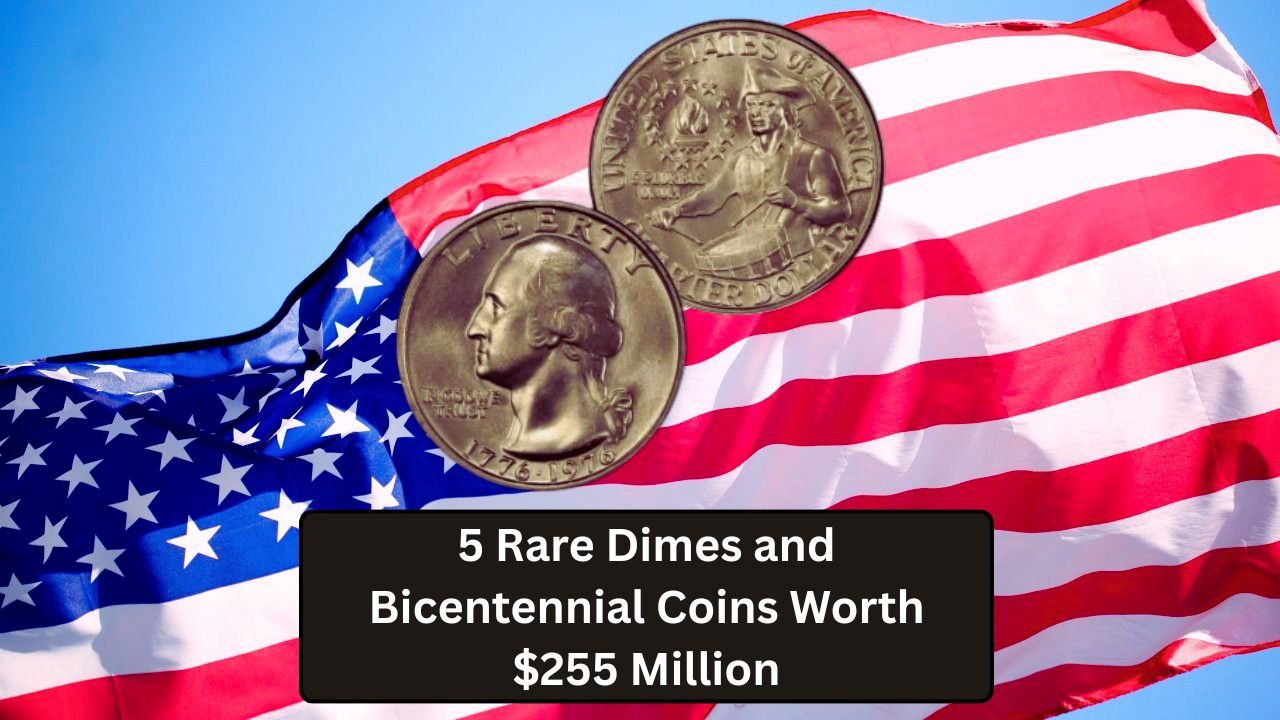A Pocket Full of Millions
Imagine finding a coin in your change that’s worth millions. In the world of coin collecting, some rare dimes and Bicentennial quarters from the U.S. could be worth a staggering $255 million. These coins, still hiding in circulation, are treasures waiting to be found. Their value comes from rare minting errors, limited production, or historical importance. Collectors are on a nationwide hunt, checking spare change, old jars, and estate sales for these life-changing finds.
The Coins That Spark Dreams
Here are five coins that could turn pocket change into a fortune:
- 1894-S Barber Dime: Only 24 were ever made, making this one of the rarest U.S. coins. Worth $1.5 to $2 million, it’s usually found in old family collections.
- 1975 No-S Roosevelt Dime: This proof dime lacks the “S” mint mark from San Francisco. Only a few exist, valued at $450,000 to $550,000.
- 1982 No-P Roosevelt Dime: Missing the “P” mint mark from Philadelphia, this dime can fetch $1,000 to $75,000, especially if uncirculated.
- 1976-S Bicentennial Silver Proof Quarter: Minted for America’s 200th birthday, a perfect PR70 Deep Cameo grade can sell for $19,200.
- 1976 Bicentennial Quarter with Double Die: A doubled design error makes this quarter worth $5,000 to $25,000.
These coins are prized for their scarcity, errors, or pristine condition.
| Coin | Estimated Value | Key Feature |
|---|---|---|
| 1894-S Barber Dime | $1.5M – $2M | Only 24 minted |
| 1975 No-S Roosevelt Dime | $450K – $550K | Missing “S” mint mark |
| 1982 No-P Roosevelt Dime | $1K – $75K | Missing “P” mint mark |
| 1976-S Bicentennial Silver Quarter | $3K – $20K | Perfect PR70 Deep Cameo grade |
| 1976 Bicentennial Double Die | $5K – $25K | Doubled design error |
Why Are These Coins So Valuable?
These coins stand out due to unique traits. The 1894-S Barber Dime is rare because so few were made. The 1975 No-S and 1982 No-P dimes have minting errors—missing mint marks—that make them collector’s gems. The 1976 Bicentennial coins, celebrating America’s 200th anniversary, gain value from errors like double dies or being struck on silver instead of clad metal. Coins in perfect condition, like the 1976-S Silver Proof, are especially prized. Their historical ties and rarity drive their sky-high prices.
The Thrill of the Search
Collectors are scouring the country for these coins, checking coin rolls from banks, old piggy banks, or even change from coffee shops. Stories of lucky finds fuel the excitement—like a teacher who sold a 1975 No-S dime for $500,000 or a student who found an 1982 No-P dime worth $10,000 at lunch. Social media, like TikTok and YouTube, is buzzing with collectors sharing tips and showing off finds. The hunt is a mix of luck, sharp eyes, and knowing what to look for, like missing mint marks or doubled designs.
Challenges in the Hunt
Finding these coins isn’t easy. Their scarcity means you might search thousands of coins without luck. Fakes are a big problem—many coins look valuable but aren’t. Collectors need to know the difference between real errors, like a doubled die, and common machine doubling, which is worth little. Getting a coin graded by experts like PCGS or NGC costs money, and a small scratch can tank a coin’s value. Despite the challenges, the dream of finding a million-dollar coin keeps collectors motivated.
Could You Have a Fortune?
These rare dimes and Bicentennial quarters could be hiding in your pocket, drawer, or change jar. To check, look at the year and mint mark (a tiny “P,” “D,” or “S” near the design). Use a magnifying glass to spot errors like doubled text or unusual size. Don’t clean coins—rubbing can ruin their value. Store them in protective sleeves and get them checked by a trusted dealer or grading service. With a bit of luck, you might find a coin worth millions, turning spare change into a life-changing treasure.

